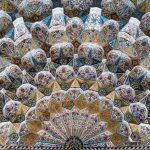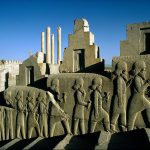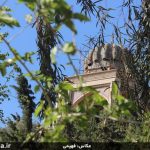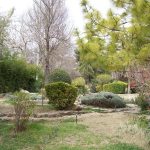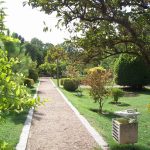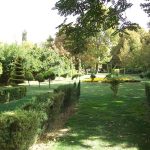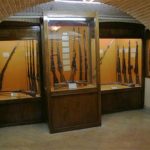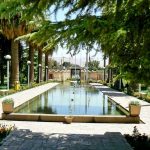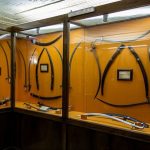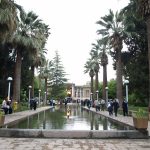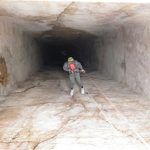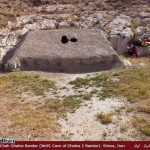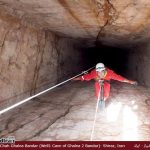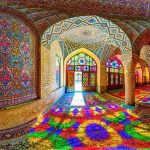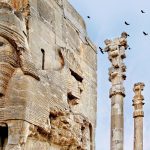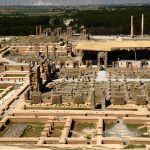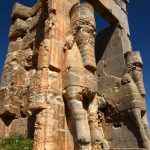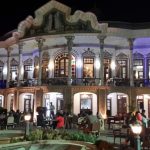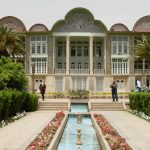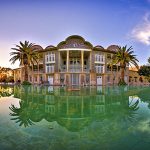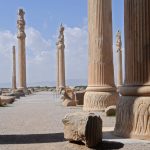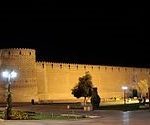SHIRAZ
SHIRAZ HISTORY
شیراز
Clockwise from top: Karim Khan Citadel, Tomb of Hafez, Shah Cheragh shrine, Nasir ol Molk Mosque, Eram Garden, Vakil Bath, and Tomb of Saadi.
Nickname(s): Cultural Capital of Iran
City of poets
City of gardens
City of flowers and nightingale
Shiraz (/ʃiːˈrɑːz/ ( listen); Persian: شیراز, Šīrāz, Persian pronunciation: [ʃiːˈrɒːz], pronunciation (help·info)) is the sixth-most-populous cityof Iran[2] and the capital of Fars Province (Old Persian as Pârsâ). At the 2011 census, the population of the city was 1,700,665 and its built-up area with “Shahr-e Jadid-e Sadra” (Sadra New Town) was home to 1,500,644 inhabitants.[3] Shiraz is located in the southwest of Iran on the “Roodkhaneye Khoshk” (The Dry River) seasonal river. It has a moderate climate and has been a regional trade center for over a thousand years. Shiraz is one of the oldest cities of ancient Persia.
The earliest reference to the city, as Tiraziš, is on Elamite clay tablets dated to 2000 BC.[4] In the 13th century, Shiraz became a leading center of the arts and letters, due to the encouragement of its ruler and the presence of many Persian scholars and artists. It was the capital of Persia during the Zand dynasty from 1750 until 1800. Two famous poets of Iran, Hafez and Saadi, are from Shiraz, whose tombs are on the north side of the current city boundaries.
Shiraz is known as the city of poets, literature, wine and flowers.[5][6] It is also considered by many Iranians to be the city of gardens, due to the many gardens and fruit trees that can be seen in the city, for example Eram Garden. Shiraz has had major Jewish and Christian communities. The crafts of Shiraz consist of inlaid mosaic work of triangular design; silver-ware; pile carpet-weaving and weaving of kilim, called gilim and jajim in the villages and among the tribes.[7] In Shiraz industries such as cement production, sugar, fertilizers, textile products, wood products, metalwork and rugs dominate.[8] Shirāz also has a major oil refinery and is also a major center for Iran’s electronic industries: 53% of Iran’s electronic investment has been centered in Shiraz.[9] Shiraz is home to Iran’s first solar power plant.[10] Recently the city’s first wind turbine has been installed above Babakoohi mountain near the city.
The earliest reference to the city is on Elamite clay tablets dated to 2000 BCE, found in June 1970, while digging to make a kiln for a brick factory in the south western corner of the city. The tablets written in ancient Elamite name a city called Tiraziš.[11]Phonetically, this is interpreted as /tiračis/ or /ćiračis/. This name became Old Persian /širājiš/; through regular sound change comes the modern Persian name Shirāz. The name Shiraz also appears on clay sealings found at a 2nd-century CE Sassanid ruin, east of the city. By some of the native writers, the name Shiraz has derived from a son of Tahmuras, the third Shāh (King) of the world according to Ferdowsi’s Shāhnāma.[12]
History
Pre-Islamic
Shiraz is most likely more than 4,000 years old. The name Shiraz is mentioned in cuneiform inscriptions from around 2000 BC found in southwestern corner of the city.[13] According to some Iranian mythological traditions, it was originally erected by Tahmuras Diveband, and afterward fell to ruin.[12] The oldest sample of wine in the world, dating to approximately 7,000 years ago, was discovered on clay jars recovered outside of Shiraz (according to the referenced article, this discovery was made in Hajji Firuz Tepe, a Neolithic village in Iran’s northern Zagros Mountains, more than a thousand kilometers north of Shiraz).[14]
In the Achaemenian era, Shiraz was on the way from Susa to Persepolis and Pasargadae. In Ferdowsi’s Shāhnāma it has been said that Artabanus V, the Parthian Emperor of Iran, expanded his control over Shiraz. Ghasre Abu-Nasr (meaning “the palace of AbuNasr”) which is originally from Parthian era is situated in this area. During the Sassanid era, Shiraz was in between the way which was connecting Bishapur and Gur to Istakhr. Shiraz was an important regional center under the Sassanians.[13]
Islamic period
The city became a provincial capital in 693, after Arab invaders conquered Istakhr, the nearby Sassanian capital. As Istakhr fell into decline, Shiraz grew in importance under the Arabs and several local dynasties.[15] The Buwayhid empire (945–1055) made it their capital, building mosques, palaces, a library and an extended city wall. It was also ruled by the Seljuks and the Khwarezmians before the Mongol conquest.
The city was spared destruction by the invading Mongols, when its local ruler offered tributes and submission to Genghis Khan. Shiraz was again spared by Tamerlane, when in 1382 the local monarch, Shah Shoja agreed to submit to the invader.[15] In the 13th century, Shiraz became a leading center of the arts and letters, thanks to the encouragement of its ruler and the presence of many Persian scholars and artists. For this reason the city was named by classical geographers Dar al-‘Elm, the House of Knowledge.[16] Among the Iranian poets, mystics and philosophers born in Shiraz were the poets Sa’di[17] and Hafiz,[18] the mystic Roozbehan, and the philosopher Mulla Sadra.[19] Thus Shiraz has been nicknamed “The Athens of Iran”.[20] As early as the 11th century, several hundred thousand people inhabited Shiraz.[21] In the 14th century Shiraz had sixty thousand inhabitants.[22] During the 16th century it had a population of 200,000 people, which by the mid-18th century had decreased to only 55,000.
In 1504, Shiraz was captured by the forces of Ismail I, the founder of the Safavid dynasty. Throughout the Safavid empire (1501–1722) Shiraz remained a provincial capital and Emam Qoli Khan, the governor of Fars under Shah Abbas I, constructed many palaces and ornate buildings in the same style as those built during the same period in Isfahan, the capital of the Empire.[15] After the fall of the Safavids, Shiraz suffered a period of decline, worsened by the raids of the Afghans and the rebellion of its governor against Nader Shah; the latter sent troops to suppress the revolt. The city was besieged for many months and eventually sacked. At the time of Nader Shah’s murder in 1747, most of the historical buildings of the city were damaged or ruined, and its population fell to 50,000, one-quarter of that during the 16th century.[15]
Shiraz soon returned to prosperity under the rule of Karim Khan Zand, who made it his capital in 1762. Employing more than 12,000 workers, he constructed a royal district with a fortress, many administrative buildings, a mosque and one of the finest covered bazaars in Iran.[15] He had a moat built around the city, constructed an irrigation and drainage system, and rebuilt the city walls.[15] However, Karim Khan’s heirs failed to secure his gains. When Agha Mohammad Khan, the founder of the Qajar dynasty, eventually came to power, he wreaked his revenge on Shiraz by destroying the city’s fortifications and moving the national capital to Tehran.[15] Although lowered to the rank of a provincial capital, Shiraz maintained a level of prosperity as a result of the continuing importance of the trade route to the Persian Gulf. Its governorship was a royal prerogative throughout the Qajar dynasty.[15] Many of the famous gardens, buildings and residences built during this time contribute to the city’s present skyline.
Shiraz is the birthplace of the co-founder of the Bahá’í Faith, the Báb (Siyyid ‘Ali-Muhammad, 1819–1850). In this city, on the evening of 22 May 1844, he first declared his mission as the bearer of a new divine revelation. For this reason Shiraz is a holy city for Bahá’ís, and the city, particularly the house of the Báb, was identified as a place of pilgrimage.[24]Due to the hostile climate towards Baha’is in Iran, the house has been the target of repeated attacks; the house was destroyed in 1979, to be paved over two years later and made into a public square.
In 1910, a pogrom of the Jewish quarter started after false rumours that the Jews had ritually killed a Muslim girl. In the course of the violent riots, 12 Jews were killed and about 50 were injured, and 6,000 Jews of Shiraz were robbed of all their possessions.
The city’s role in trade greatly diminished with the opening of the trans-Iranian railway in the 1930s, as trade routes shifted to the ports in Khuzestan. Much of the architectural inheritance of Shiraz, and especially the royal district of the Zands, was either neglected or destroyed as a result of irresponsible town planning under the Pahlavi dynasty.
Lacking any great industrial, religious or strategic importance, Shiraz became an administrative center, although its population has nevertheless grown considerably since the 1979 revolution.
Modern times
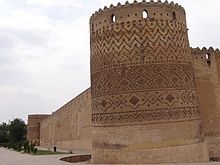
The city’s municipality and other related institutions have initiated restoration and reconstruction projects.[15]
Some of the most recent projects have been the complete restoration of the Arg of Karim Khan and of the Vakil Bath, as well as a comprehensive plan for the preservation of the old city quarters. Other noteworthy initiatives include the total renovation of the Qur’an Gateand the mausoleum of the poet Khwaju Kermani, both located in the Allah-u-Akbar Gorge, as well as the restoration and expansion of the mausoleum of the famous Shiraz-born poets Hafiz and Saadi.[15]
Several different construction projects are currently underway that will modernize the city’s infrastructure. The Shiraz 1400 chain of projects is set to transform the city.[27]
After the Iranian Revolution, Shiraz was re-established as the capital of Iranian Art and Culture. Shiraz is known as the capital of Persian Art, Culture and Literature.
Geography
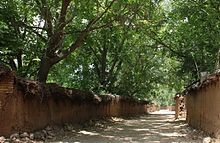
Shiraz is located in the south of Iran and the northwest of kerman Province. It is built in a green plain at the foot of the Zagros Mountains1,500 metres (4,900 feet) above sea level. Shiraz is 800 kilometres (500 mi) south of Tehran.[28]
A seasonal river, Dry River, flows through the northern part of the city and on into Maharloo Lake.[citation needed] As of 1920, the area had a large forest of oak trees.[29]
Gardens and Clean Shiraz[edit]
During the Zand dynasty when Shiraz was the capital of Iran, it was a small village limited around the Arg of Karim Khan and naturally there were several villages near it. The north part of old Shiraz (now Qasr al-dasht and Chamran) was completely covered with gardens and green trees that still remain. A number of municipal laws prohibit construction in any of the garden areas. In another view, these gardens are the city’s lungs and help to clean the dust, and haze or carbon dioxide that cars produce, by photosynthesis. On the other hand, we see Shiraz more likely to have the best clean weather in Iran compare with big cities such as Tehran or Isfahan, the reason behind it maybe laid in Shiraz gardens.
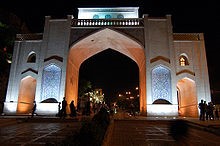
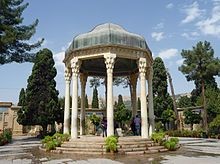
Tomb of Hafez
Shiraz is the economic center of southern Iran. The second half of the 19th century witnessed certain economic developments that greatly changed the economy of Shiraz. The opening of the Suez Canal in 1869 allowed the extensive import into southern Iran of inexpensive European factory-made goods, either directly from Europe or via India.[34] Farmers in unprecedented numbers began planting cash crops such as opium poppy, tobacco, and cotton. Many of these export crops passed through Shiraz on their way to the Persian Gulf. Iranian long-distance merchants from Fars developed marketing networks for these commodities, establishing trading houses in Bombay, Calcutta, Port Said, Istanbul and even Hong Kong.[34]
Shiraz’s economic base is in its provincial products, which include grapes, citrus fruits, cotton and rice.[35] Industries such as cement production, sugar, fertilizers, textile products, wood products, metalwork and rugs dominate.[35] Shirāz also has a major oil refinery and is also a major center for Iran’s electronic industries. 53% of Iran’s electronic investment has been centered in Shiraz.[36] Agriculture has always been a major part of the economy in and around Shiraz. This is partially due to a relative abundance of water compared to the surrounding deserts. Shirāz is famous for its carpet production and flowers as well. Viticulture has a long history in the region, and Shirazi wine used to be produced here. Shiraz is also an Iranian center for IT, communication, electronic industry, and transportation.[citation needed]
The Shiraz Special Economic Zone or the SEEZ was established in 2000 with the purpose of boosting manufacturing in electronics and communications.

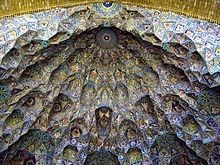
With more than 25 malls and 10 bazaars, Shiraz is known[by whom?] as the easiest place for shopping in Iran and the Middle East.[citation needed]
The Persian Gulf Complex, located at the north end of the city, is the largest mall in the world in terms of the number of shops.[39]
The Vakil Bazaar, one of the oldest bazaars in the world, is located in the old city centre of Shiraz. Featuring beautiful courtyards, caravansarais, and bath houses, its shops are deemed among the best places in Shiraz to buy all kinds of Persian rugs, spices, copper handicrafts and antiques.[citation needed]
Demography
As of 2011, Shiraz has a population of 2,353,696 the majority of whom are Persian.[40] Most of the population of Shiraz are Muslims. Shiraz also was home to a 20,000-strong Jewish community, although most emigrated to the United States and Israel in the latter half of the 20th century.[41] Along with Tehran and Esfahan, Shiraz is one of the handful of Iranian cities with a sizable Jewish population, and more than one active synagogue. Though officially Muslims, many Shirazis privately practice Zoroastrianism or at least hold it in high regard.[citation needed]
Shiraz also has a significant Baha’i population, the largest in the country after Tehran.
There are currently two functioning churches in Shiraz, one Armenian, the other, Anglican.[42][43]
Tourism
Tourist attractions in Shiraz
The city is one of the key tourism sites in Iran, its cultural heritage is of global importance.[48]

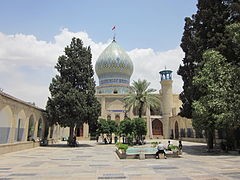
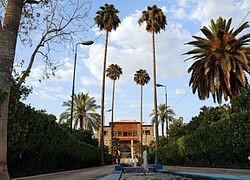
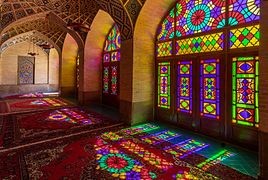

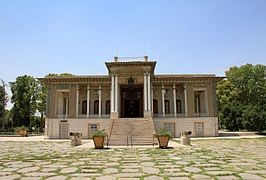
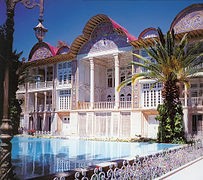

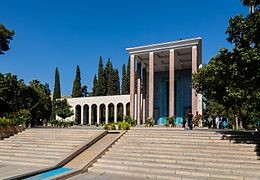
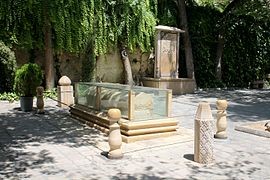
• The tombs of Hafiz,[49] Saadi, and Khaju e Kermani (whose tomb is inside a mountain above the city’s old Qur’an Gate). Other lesser known tombs are that of Shah Shoja’ (the Mozafarid emir of Persia, and patron of Hafiz), and the Haft Tanan mausoleum, where seven Sufi mystics are buried. The Tomb of Baba Kuhi sits atop a mountain overlooking the city, and the tomb of Karim Khan Zand is at the Pars Museum of Shiraz.
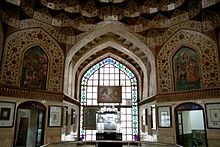
• The oldest mosque is Atigh Jame’ Mosque, which is one of the older mosques of Iran, followed by Vakil Mosque and Nasir al-Mulk mosque. The Vakil Mosque is situated west of the famous Vakil Bazaar. It covers an area of 8,660 square metres (93,200 square feet) and was built in 1187 (AH) during the Zand Dynasty. On the two sides of the entrance gate there are magnificent tile-works and arches. The left and right corridors of the entrance gate are connected to the main room.
• The citadel of Arg of Karim Khan sits adjacent to the Vakil Bazaar and Vakil Bath at the city’s central district. The most famous of houses are Zinat-ol-Molook House and Gahavam’s House, both in the old quarters of the city.
• The Qur’an Gate is the entrance to Shiraz. It is located near the gorge of Allah-o-Akbar and is flanked by the Baba Kuhi and Chehel Maqam mountains. The gateway is where two copies of the Qurans known.
• The Eram Garden (Bagh-e Eram) in Shiraz is a striking location for visitors with a variety of plants as well as a historic mansion. Although the exact date of the construction of the garden is not clear, historical evidence suggests it was constructed during the Seljuk Dynasty on the orders of the celebrated Seljuk monarch Sanjar. Other historical Persian gardens are Afifabad Garden and The Museum of Weapons, Delgosha Garden and Jahan Nama Garden.
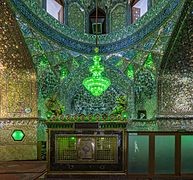
Tourist Attractions near Shiraz
Within a relatively short driving distance from Shiraz are the ruins of Persepolis, Bishapur, Pasargadae, and Firouzabad. At Naqsh-e Rustam can be found the tombs of the Achaemenid kings as well as the Ka’ba-ye Zartosht, which has been thought to be either a Zoroastrian fire temple or possibly even the true tomb of Cyrus the Great. Maharloo Lakeis a popular breeding ground for various bird species.
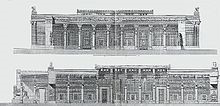
• Persepolis was the ceremonial capital of the Achaemenid Empire (ca. 550–330 BC). Persepolis is situated 60 km northeast of the city of Shiraz in Fars Province, Iran. The earliest remains of Persepolis date back to 515 BC. It exemplifies the Achaemenid style of architecture. UNESCO declared the ruins of Persepolis a World Heritage Site in 1979.[50]
• Tomb of Cyrus is the monument of Cyrus the Great approximately 1 kilometre (0.62 miles) southwest of the palaces of Pasargadae, According to Greek sources, it dates back to 559-29 B.C. The most extensive description based on a lost account by Aristobulus. who had accompanied Alexander the Great on his eastern campaign in the late 4th century B.C., is to be found in the Anabasis of Arrian (6.29). written in the 2nd century A.D.[51]
• Naqsh-e Rustam is an ancient necropolis located about 12 kilometres (7.5 miles) northwest of Persepolis, in Fars Province, Iran, with a group of ancient Iranian rock reliefs cut into the cliff, from both the Achaemenid and Sassanid periods. It lies a few hundred m from Naqsh-e Rajab, with a further group of Sassanid reliefs. Naqsh-e Rostam site contains funerary related works belonging to the Elamite (second millennium BCE), Achaemenid (550–330 BCE) and Sassanid (226–651 CE) eras. Naqsh-e Rostam is a site believed by archaeologists to have been a cemetery for Persepolis, where Achaemenid, Parthian and Sassanid royalty were laid to rest.
• Bishapur was an ancient city in Iran on the ancient road between Persis and Elam. The road linked the Sassanid capitals Estakhr (very close to Persepolis) and Ctesiphon. It is located south of modern Faliyan in the Kazerun County of Pars Province, Iran. Bishapur was built near a river crossing and at the same site there is also a fort with rock-cut reservoirs and a river valley with six Sassanid rock reliefs.
• Margoon Waterfall is located in the Fars province of Iran near the city of Sepidan. Its name means in Persian “snake like”.
• Shapur cave is located in the Zagros Mountains, in southern Iran, about 6 kilometres (3.7 miles) from the ancient city of Bishapur. This cave is near Kazerun in Chogan valley, which was the site of polo (Persian čōgān چُوگان), in the Sasanian period.
• Palace of Ardashir, also known as the Atash-kadeh, is a castle located on the slopes of the mountain on which Dezh Dokhtar is situated. Built in AD 224 by King Ardashir I of the Sassanian Empire, it is located two kilometres (1.2 miles) north of the ancient city of Gor, i.e. the old city of Piruz-Apad in Pars, in ancient Persia (Iran).
• Pooladkaf is a ski resort in the south of Iran. It opened in 2002. In spite of its low latitude, it receives adequate snow due to its high elevation (usually 2 metres or 6.6 feet of snow in February). The skiing season starts in December and lasts to the end of March, or in some years April.
• The Sarvestan Palace is a Sassanid-era building in the Iranian city of Sarvestan, some 90 kilometres (56 miles) southeast from the city of Shiraz. The palace was built in the 5th century AD, and was either a gubernatorial residence or a Zoroastrian fire temple.
• Qal’eh Dokhtar, is a castle made by Ardashir I, in present-day Fars, Iran, in 209 AD. It is located on a mountain slope near the Firouzabad-Kavar road.
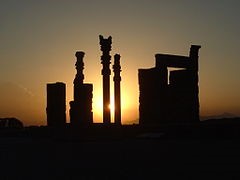
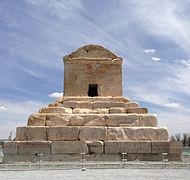
• Tombs of Artaxerxes I and Darius II, Naqsh-e Rostam
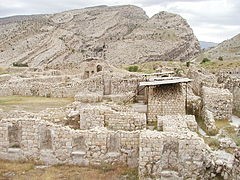

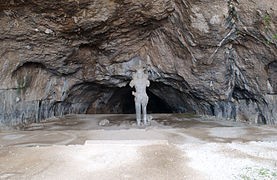
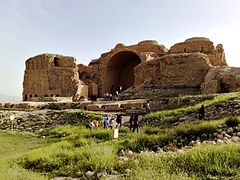


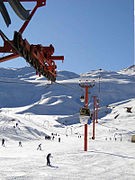

|
|
|
| -18(°C) | |
| Wind | (mph) |
| Pressure | (in) |
| Visibility | (mi) |
| UV Index | - |
| Humidity | (in) |

